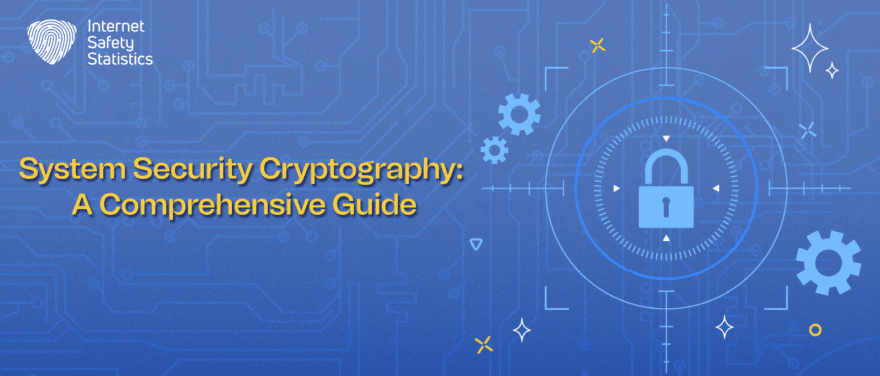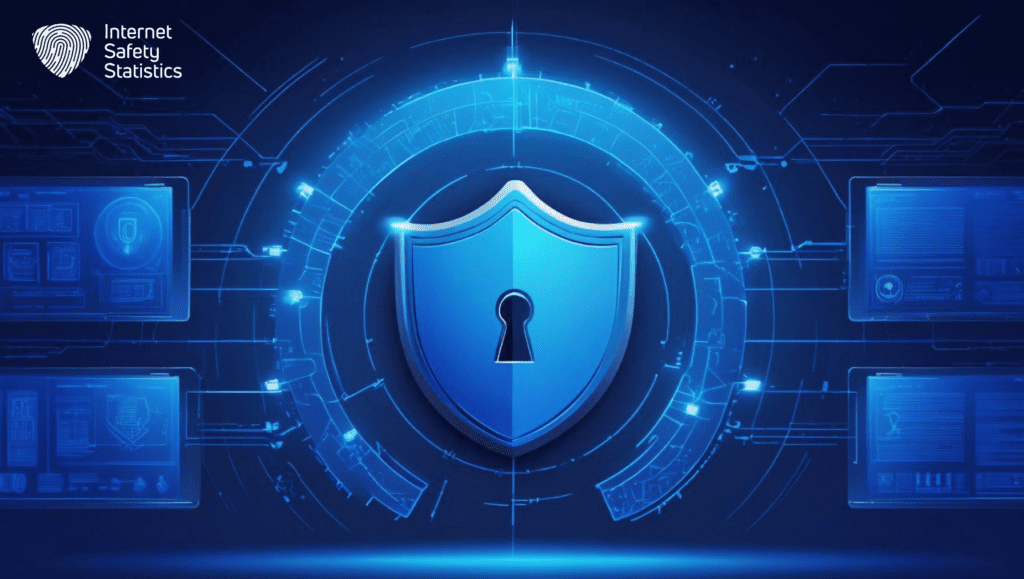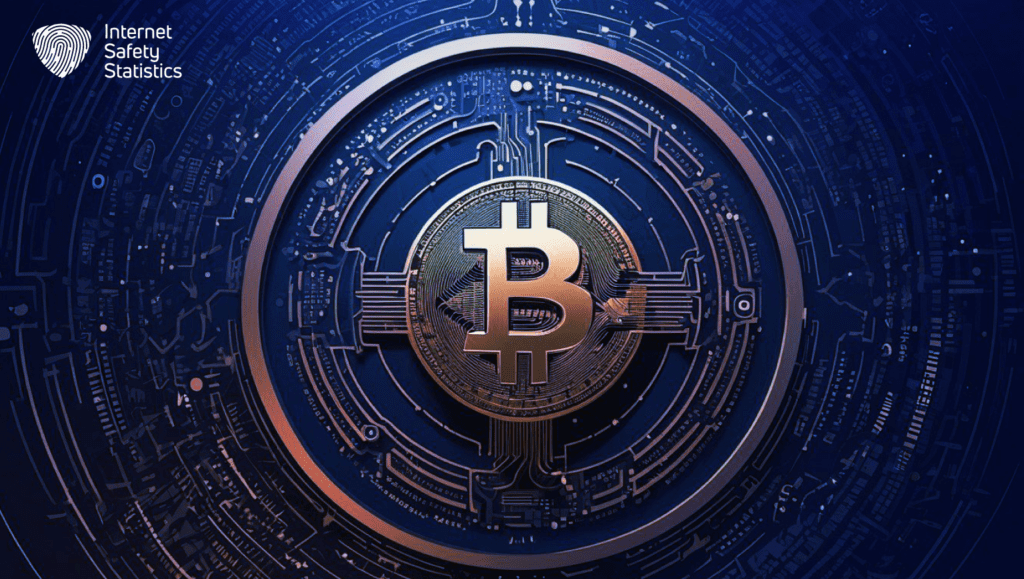
System Security Cryptography (SSC) is a pivotal domain that revolves around fortifying digital systems through the art and science of cryptography. It serves as the cornerstone for ensuring the confidentiality, integrity, and authenticity of sensitive data within computer systems and networks. SSC is an essential component of any organisation’s cybersecurity strategy. By implementing effective SSC measures, organisations can protect their valuable assets, maintain business continuity, and meet their compliance obligations.
As an integral component of system security, cryptography within SSC involves the creation and implementation of robust encryption and decryption techniques, serving as a bulwark against unauthorised access and potential breaches in today’s interconnected digital landscape. Let’s explore all the aspects of SSC in this article.
What is System Security Cryptography?
System Security Cryptography (SSC) is a comprehensive set of security measures that safeguard information systems from unauthorised access, use, disclosure, disruption, modification, or destruction. SSC encompasses a wide range of security technologies and techniques, including:
- Encryption: Converting data into an unreadable format, known as ciphertext, using a cryptographic algorithm and a key. Only authorised users who possess the correct key can decrypt the ciphertext back into readable plaintext.
- Authentication: Verifying the identity of a user or device to ensure that only legitimate entities can access and interact with information systems. This is typically achieved through the use of credentials, such as passwords, PINs, or certificates.
- Access control: Controlling who can access specific data, systems, or resources based on their identity and permissions. This helps to prevent unauthorised access to sensitive information and protect against unauthorised actions.
- Intrusion detection: Continuously monitoring systems for suspicious activity that may indicate an attempted attack or breach. Intrusion detection systems (IDS) analyse network traffic, system logs, and user activity to detect anomalies and alert security personnel.
- Data integrity: Ensuring that data remains accurate, complete, and unmodified throughout its lifecycle, preventing data tampering or corruption. This is often achieved through the use of checksums, digital signatures, and hashing algorithms.
- Non-repudiation: Demonstrating that a particular action or transaction was performed by a specific individual or entity. This is crucial for ensuring accountability and preventing users from denying their actions. Digital signatures and audit logs are commonly used for non-repudiation.
What are the Benefits of SSC?
Here are some of the benefits of implementing SSC effectively:
- Reduced risk of data breaches: SSC measures can significantly lower the likelihood of successful cyberattacks that could result in data breaches, financial losses, and reputational damage.
- Enhanced data confidentiality: Encryption protects sensitive data from unauthorised access, ensuring that only authorised individuals can view or access it.
- Improved data integrity: Data integrity mechanisms safeguard the accuracy and consistency of data, preventing unauthorised modifications or alterations.
- Maintained availability of systems: SSC helps to prevent system outages and disruptions, ensuring that critical information systems remain operational and accessible to authorised users.
- Compliance with data protection regulations: SSC measures can help organisations comply with various data protection regulations, such as GDPR, CCPA, and HIPAA.
By implementing SSC best practices, organisations can strengthen their cybersecurity posture, protect their valuable data assets, and mitigate the risks associated with cyber threats. Regularly reviewing and updating SSC controls is crucial to maintaining an effective and resilient security posture in the face of evolving cyber threats.
Why is SSC Important?

System Security Cryptography (SSC) is a critical component of any organisation’s information security strategy. By implementing effective SSC measures, organisations can protect their valuable assets, such as intellectual property, customer data, and financial information, from unauthorised access and misuse.
Here are some of the key reasons why SSC is important:
1. Protects Sensitive Information from Unauthorised Access
SSC measures, such as encryption, authentication, and access control, help to safeguard sensitive information from unauthorised access. This includes data stored on devices, data transmitted over networks, and data in transit. By encrypting data, organisations can prevent it from being accessed by unauthorised individuals, even if devices or networks are compromised.
2. Enhances Data Confidentiality and Integrity
SSC measures help to ensure that data remains confidential and unaltered throughout its lifecycle. Encryption protects data from unauthorised access, while authentication and access control prevent unauthorised modifications or deletions. Data integrity mechanisms, such as checksums and digital signatures, ensure that data remains accurate and consistent.
3. Maintains Availability of Systems
SSC can help to prevent system outages and disruptions, ensuring that critical information systems remain operational and accessible to authorised users. Intrusion detection systems (IDS) and intrusion prevention systems (IPS) can detect and mitigate attacks that could compromise system availability.
4. Complies with Data Protection Regulations
SSC measures can help organisations comply with various data protection regulations, such as GDPR, CCPA, and HIPAA. These regulations require organisations to protect the privacy and security of personal data, and SSC is a key way to achieve compliance.
5. Mitigates the Risk of Data Breaches and Financial Losses
SSC measures can significantly reduce the likelihood of successful cyberattacks that could result in data breaches, financial losses, and reputational damage. By implementing effective SSC controls, organisations can minimise their exposure to these risks.
In conclusion, SSC is an essential component of any organisation’s cybersecurity strategy. By implementing effective SSC measures, organisations can protect their valuable data assets, maintain business continuity, and meet their compliance obligations.
The Pillars of SSC
System Security Cryptography (SSC) encompasses a wide range of security measures that safeguard information systems from unauthorised access, use, disclosure, disruption, modification, or destruction. These measures can be broadly categorised into five pillars:
1. Encryption
Encryption is the process of transforming data into an unreadable format called ciphertext using an algorithm and a key. Only authorised users who possess the correct key can decrypt the ciphertext back into readable plaintext. Encryption is a fundamental pillar of SSC, as it helps to protect sensitive information from unauthorised access and disclosure.
2. Authentication
Authentication is verifying a user’s or device’s identity to ensure that only legitimate entities can access and interact with information systems. This is typically achieved through the use of credentials, such as passwords, PINs, or certificates. Authentication is crucial for SSC, as it ensures that only authorised users can access sensitive information and perform authorised actions.
3. Access Control
Access control is the process of controlling who can access specific data, systems, or resources based on their identity and permissions. This helps to prevent unauthorised access to sensitive information and protect against unauthorised actions. Access control can be implemented through various mechanisms, such as role-based access control (RBAC), attribute-based access control (ABAC), and network access control (NAC).
4. Intrusion Detection
Intrusion detection is the process of continuously monitoring systems for suspicious activity that may indicate an attempted attack or breach. Intrusion detection systems (IDS) analyse network traffic, system logs, and user activity to detect anomalies and alert security personnel. IDS is an important pillar of SSC, as it helps to detect and mitigate attacks before they can cause significant damage.
5. Data Integrity
Data integrity ensures that data remains accurate, complete, and unmodified throughout its lifecycle, preventing data tampering or corruption. This is often achieved through the use of checksums, digital signatures, and hashing algorithms. Data integrity is a critical pillar of SSC, as it maintains the reliability and trustworthiness of sensitive information.
These pillars of SSC work together to protect sensitive information from a wide range of cyber threats, including:
- Data breaches
- Unauthorised access
- Modification of data
- Disruption of services
- Theft of intellectual property
- Financial fraud
By implementing SSC effectively, organisations can strengthen their cybersecurity posture, protect their valuable data assets, and mitigate the risks associated with cyber threats. Regularly reviewing and updating SSC controls is crucial to maintaining an effective and resilient security posture in the face of evolving cyber threats.
Types of Cryptography

1. Symmetric Cryptography
Symmetric cryptography uses the same key to encrypt and decrypt data. This key must be kept secret, and both parties must have access to it in order to communicate securely. Symmetric cryptography is fast and efficient, and it is ideal for encrypting large amounts of data.
Examples of symmetric cryptography algorithms include:
- Advanced Encryption Standard (AES)
- Data Encryption Standard (DES)
- Blowfish
- Twofish
2. Asymmetric Cryptography
Asymmetric cryptography uses a pair of keys: a public key and a private key. The public key can be shared with anyone, while the private key must be kept secret. To encrypt a message, the sender uses the recipient’s public key. To decrypt the message, the recipient uses their private key. Asymmetric cryptography is slower than symmetric cryptography, but it is more secure because it does not require the exchange of secret keys.
Examples of asymmetric cryptography algorithms include:
- Rivest-Shamir-Adleman (RSA)
- Elliptic Curve Cryptography (ECC)
3. Hybrid Cryptography
Hybrid cryptography combines symmetric and asymmetric cryptography. This is the most common type of cryptography used today. Symmetric cryptography is used to encrypt the bulk of the data, and asymmetric cryptography is used to encrypt the symmetric key. This allows for efficient encryption of large amounts of data while maintaining security.
Examples of hybrid cryptography algorithms include:
- OpenPGP
- S/MIME
In addition to symmetric and asymmetric cryptography, there are a number of other specialised types of cryptography, including:
4. Hash Function Cryptography
Hash function cryptography creates a unique fingerprint of a piece of data. This fingerprint cannot be reversed, so it cannot be used to decrypt the data. Hash functions are used to verify the integrity of data, to check for data tampering, and to create digital signatures.
Examples of hash function cryptography algorithms include:
- MD5
- SHA-1
- SHA-2
- SHA-3
5. Quantum Cryptography
Quantum cryptography is a new type of cryptography that uses the principles of quantum mechanics to create secure communication channels. Quantum cryptography is still in its early stages of development, but it has the potential to be the most secure type of cryptography available.
Examples of quantum cryptography algorithms include:
- BB84
- Ekert’s Protocol
Applications of SSC
Here are some of the applications of System Security Cryptography (SSC):
- Protecting sensitive data at rest: SSC can be used to encrypt data that is stored on disk or in the cloud. This helps to prevent unauthorised access to sensitive data, even if devices or networks are compromised.
- Protecting sensitive data in transit: SSC can also be used to encrypt data that is transmitted over a network. This helps to prevent eavesdropping and data interception.
- Protecting digital communications: SSC can be used to secure email, instant messaging, and other forms of digital communication. This helps to prevent unauthorised access to sensitive information, such as passwords and credit card numbers.
- Managing digital identities: SSC can be used to verify the identity of users and devices. This helps to prevent unauthorised access to systems and resources.
- Providing non-repudiation: SSC can be used to verify the authenticity of digital documents. This helps to prevent users from denying their actions.
- Ensuring the integrity of data: SSC can be used to verify the integrity of data. This helps to detect whether data has been tampered with.
- Protecting against malware: SSC can be used to protect against malware, such as viruses and worms. This helps to prevent malware from stealing or damaging data.
- Compliance with data protection regulations: SSC can help organisations comply with various data protection regulations, such as GDPR, CCPA, and HIPAA.
In addition to these specific applications, SSC is also used in a wide range of other areas, including:
- E-commerce: SSC is used to protect online transactions and payments.
- Healthcare: SSC is used to protect patient records and other sensitive medical information.
- Government: SSC is used to protect classified information and other sensitive government data.
- Finance: SSC is used to protect financial transactions and other sensitive financial data.
- Military: SSC is used to protect military communications and other sensitive military data.
Challenges of SSC
System Security Cryptography (SSC) is a complex and ever-evolving field, and implementing and maintaining effective SSC measures can pose significant challenges for organisations. These challenges include:
Key Management
- Securing and managing cryptographic keys is a critical aspect of SSC, as keys are essential for encryption, decryption, authentication, and digital signatures. However, keys are also vulnerable to theft or compromise, which could lead to serious security breaches.
Scalability
SSC solutions must be able to scale to handle large volumes of data and increase network traffic. As organisations grow and their data volumes expand, SSC solutions must be able to adapt and support the growing demands for security and protection.
Usability
SSC solutions should be easy to use for both administrators and end users. Complex and cumbersome SSC implementations can lead to user frustration and resistance, potentially hindering the adoption and effectiveness of security measures.
Compliance with Regulations
Organisations must comply with a variety of data protection regulations, such as GDPR, CCPA, and HIPAA. SSC solutions must be designed to meet these compliance requirements, which can add complexity and cost to implementing and maintaining SSC measures.
Addressing Evolving Threats
The cybersecurity landscape is constantly changing, with new threats and attack methods emerging regularly. SSC solutions must be able to adapt and evolve to address these new threats, which requires ongoing research, development, and updating of security protocols.
Cost and Resource Requirements
Implementing and maintaining SSC measures can be expensive. Organisations must allocate sufficient resources and expertise to effectively implement, manage, and monitor their SSC systems.
Managing Risk and Balancing Security with Convenience
Organisations must strike a balance between security and convenience when implementing SSC measures. Overly restrictive security measures can hinder productivity and user experience, while inadequate security can leave sensitive data vulnerable to attack.
Educating Users about Security Risks
Employees and users must be well-informed about cybersecurity risks and the importance of following security procedures. Effective security education can help to prevent user errors and negligence, which often contribute to successful cyberattacks.
By proactively addressing these challenges, organisations can implement effective SSC measures that protect their sensitive information, safeguard their valuable assets, and maintain business continuity.
Future of SSC and Emerging Technologies
The field of SSC is constantly evolving as new cryptographic algorithms, technologies, and threat vectors emerge. Organisations should stay up-to-date with the latest developments in SSC to ensure their security measures remain effective against evolving threats. Emerging technologies, such as quantum computing and artificial intelligence, have the potential to revolutionise SSC, enabling more secure and efficient data protection solutions. As these technologies mature, organisations should explore their potential applications in their SSC strategies.
Conclusion
SSC is a critical component of cybersecurity that protects sensitive information, safeguards assets, and maintains business continuity. By implementing effective SSC measures, organisations can enhance their security posture, mitigate risk, and comply with regulations. Emerging technologies, such as quantum computing and artificial intelligence, will continue to influence SSC, requiring organisations to adapt their security strategies accordingly.
